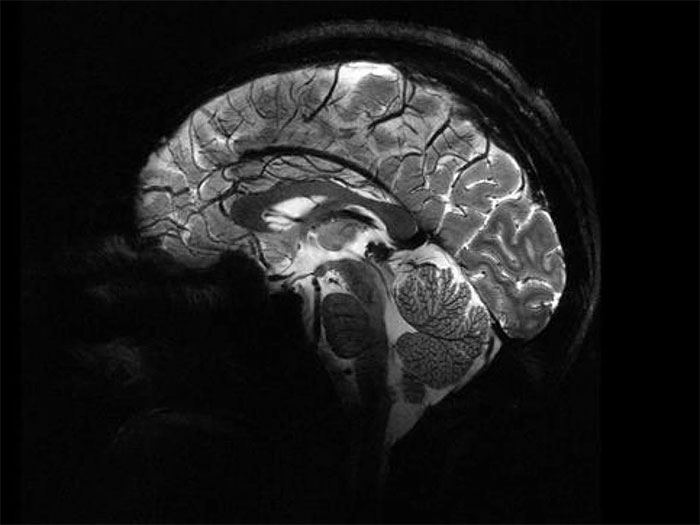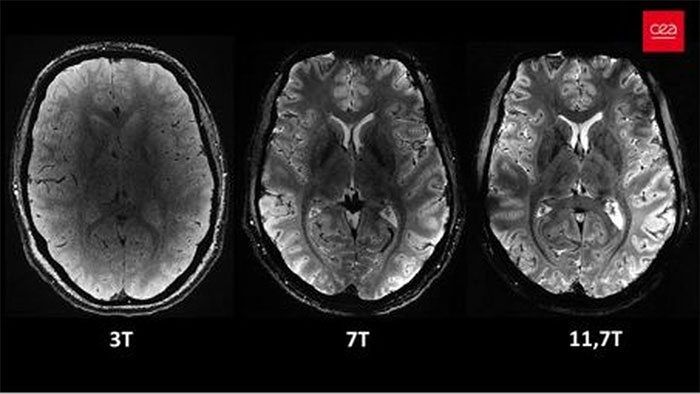The clearest image of our brain from a super MRI scanner
The prospects opened up by this unique machine in the world are huge, helping scientists to establish better diagnoses for many types of brain diseases.
These historic images were taken from the Iseult MRI scanner , magnetic resonance imaging, in the CEA research center, the French Atomic Energy Commission.

Human brain taken from the Iseult MRI scanner. (Photo: CEA).
Research director at CEA, Nicolas Boulant said: "It's an unknown world open to our eyes and scientists are eager to explore it.
With these images, we can see quite breathtaking details. It tells us about anatomical details such as veins or cortical layers that were previously unattainable."
Thanks to the Iseult MRI scanner, researchers can dissect our brains with incredible precision: about one hundred millionth of a meter or the thickness of four hairs.
230,000 times more powerful than Earth's magnetic field
These results mark the culmination of more than 20 years of work by the researchers, at a total cost of around 200 million euros.
Researcher Anne Isabelle Etienvre (CEA), said that this machine creates a record magnetic field (11.7 Tesla units), 230,000 times greater than the Earth's magnetic field. Note that the higher the magnetic field, the greater the resolution of the image.

Axial part of the human brain. (Photo: CES).
The MRI scanner is currently located at the CEA Neurospin neuroimaging center in Saclay (France).
It possesses a giant electromagnet with a diameter of 5 meters, a length of 5 meters and a weight of more than 130 tons, using energy from an electric current of up to 1,500 Ampere.
This masterpiece is made up of 182km of superconducting niobium-titanium alloy wire, wound in a coil. To work, it must be cooled to minus 271.35⁰C, thanks to 7,500 liters of superfluid helium.
A historic moment
Images of the volunteers' brains, presented to the public on April 2, were a historic moment.
For the first time in the world, our brains have been imaged with high precision. It hopes to shed light on medical and scientific knowledge, revealing great promises for the future.
Thanks to functional analyses, this MRI scanner can help us better understand how the brain works in cognitive processes such as reading and language learning.
At the same time, the machine can also probe the biochemical activity of the brain or map the distribution of lithium, glucose, glutamate or iron in the brain. These substances have been implicated in various mental illnesses (bipolar disorder, schizophrenia) or neurodegenerative diseases.
For example, detecting excess iron in the brain would help diagnose Parkinson's disease years in advance. Nowadays, the problem of diagnosing this disease is very late.
The fact that scientists can detect processes taking place in the brain at an earlier stage could help us better understand the disease, or even enable research and development of new treatments.
- Computer read the dream image
- The brain scanner finds autism for 15 minutes
- There will be a machine to read
- 3D scanner made in Vietnam
- 3D scanner launched
- Handheld Brain Scanners help to treat newborns
- Published a map of human brain
- Russia invented pocket-sized anti-terrorism scanner
- 'Super Sensitive' Security Scanner
- Read the dream with ... scanner
- The clearest picture of the sun flare
- 50 years ago the first CT scanner let doctors see inside the skull
 The US company is about to build a supersonic passenger plane of 6,000km / h
The US company is about to build a supersonic passenger plane of 6,000km / h Japan develops avatar robot as in fiction film
Japan develops avatar robot as in fiction film Australia tested the world's first mango picking robot
Australia tested the world's first mango picking robot America develops technology to separate water from animal waste
America develops technology to separate water from animal waste